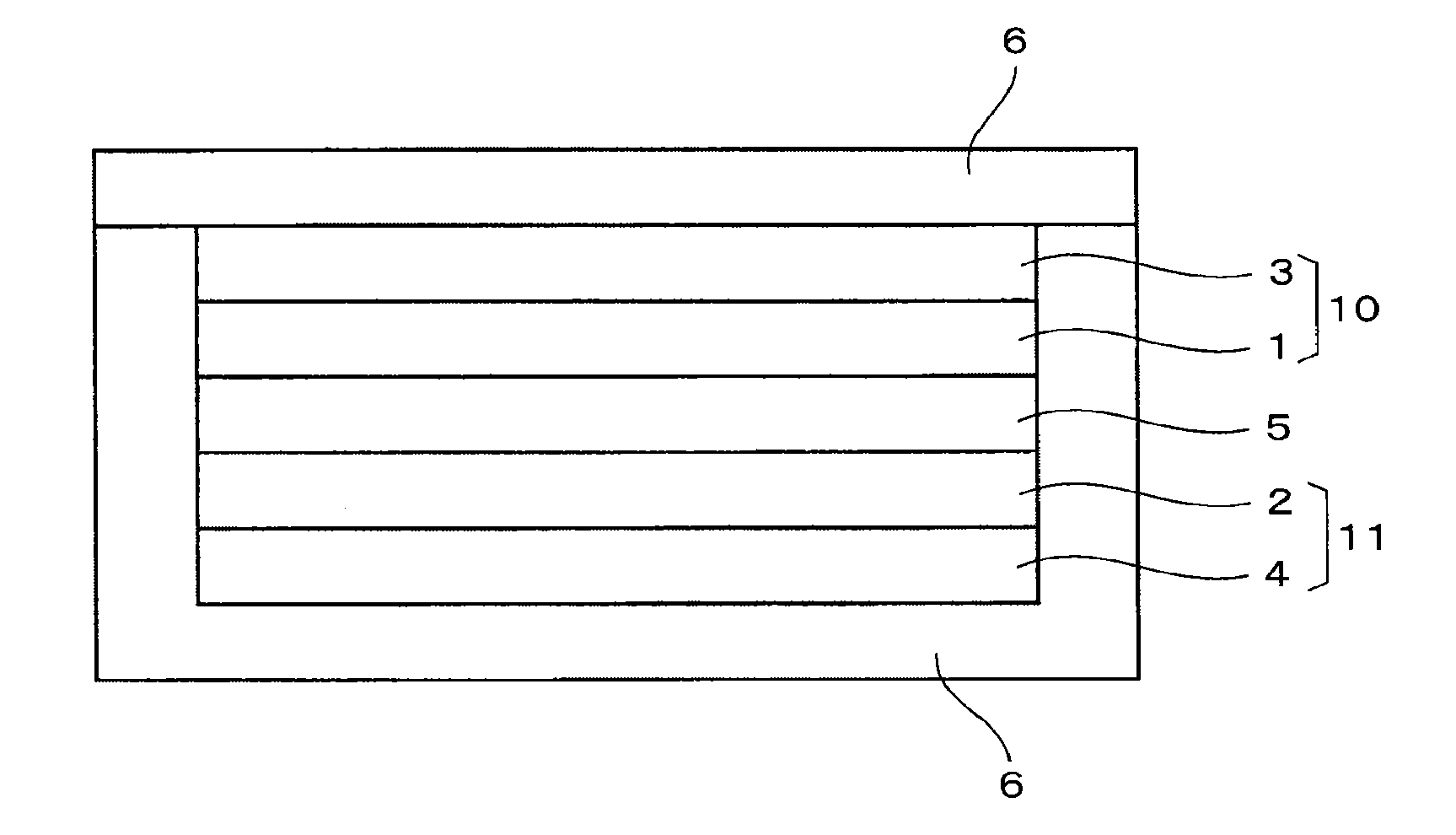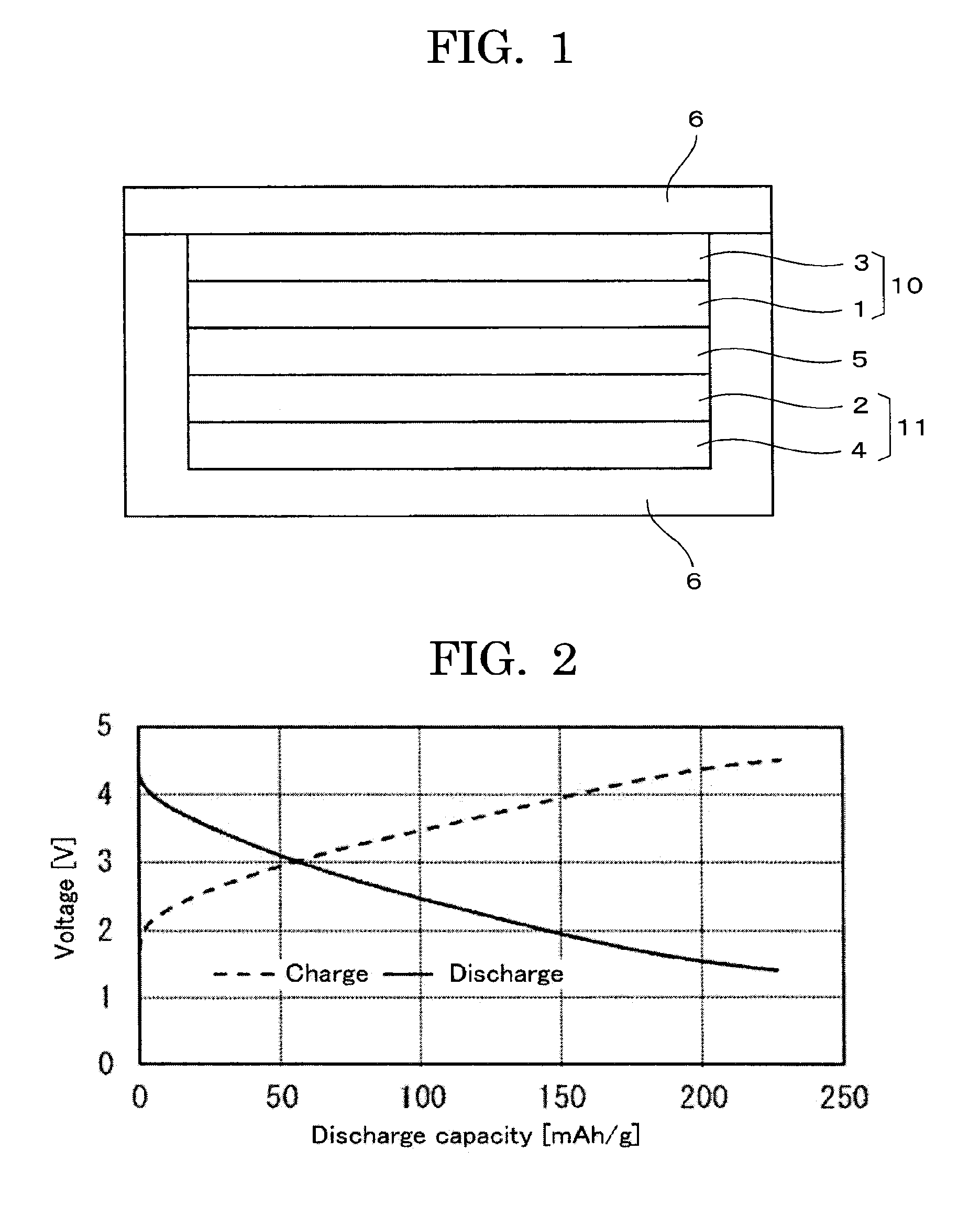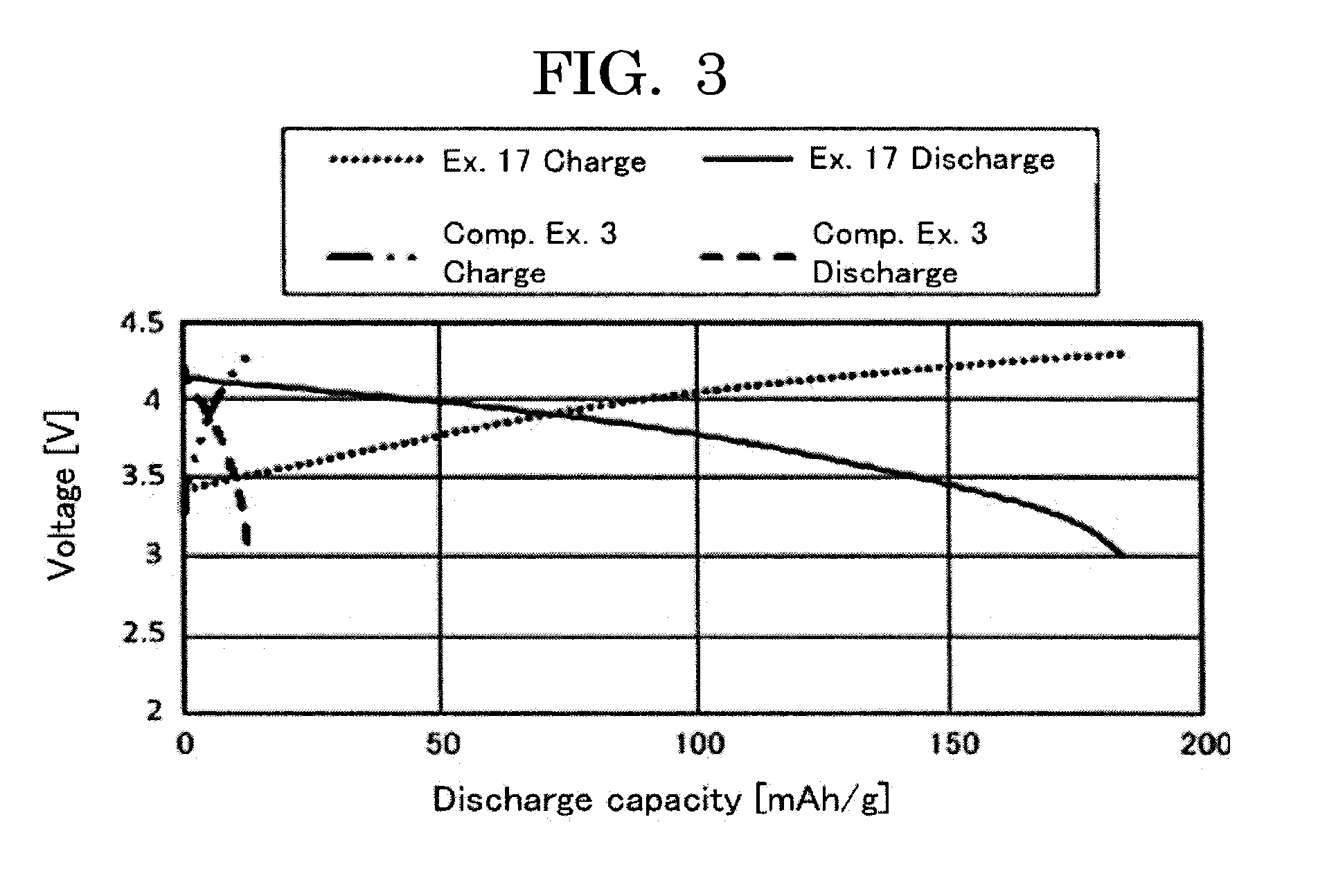Secondary battery
a secondary battery and battery technology, applied in the field of secondary batteries, can solve the problems of insufficient discharge capacity of quinone, unsatisfactory secondary batteries, and insufficient battery capacity per unit mass, and achieve the effect of good cycling property and high energy density
- Summary
- Abstract
- Description
- Claims
- Application Information
AI Technical Summary
Benefits of technology
Problems solved by technology
Method used
Image
Examples
example 1
Production of Secondary Battery
—Production of Cathode—
[0083]The compound 4, acetylene black (DENKA BLACK, manufactured by Denka Company Limited) serving as a conductive aid, and poly(vinylidene fluoride) (KF POLYMER L#1120, manufactured by KUREHA CORPORATION) serving as a binder were mixed together. To this, 17 mL of N-methylpyrrolidone (dehydrating solvent, manufactured by KANTO CHEMICAL CO., INC.) was added, followed by kneading until homogeneous to thereby obtain black paste. Notably, the compound 4, the conductive aid, and the binder were mixed in a mass ratio of 2:6:2.
[0084]Next, the resultant paste was uniformly applied onto a sheet of aluminium foil (manufactured by UACJ Foil Corporation, thickness: 20 μm) using a tool for blade coating. The resultant coating film was placed into a hot air drier previously set at 100° C. and dried for 20 min to thereby produce a cathode layer. The resultant cathode layer was the cut into a circle having a diameter of 16 mm, which was used as ...
examples 2 to 16
Production of Secondary Battery
[0088]Secondary batteries of Examples 2 to 16 were produced in the same manner as in Example 1, except that the compound 4 was changed to organic compounds represented by compound numbers described in rows of Examples 2 to 16 in Table 1.
example 17
Production of Secondary Battery
[0097]The electrode used as the cathode in Example 1 was used as the anode to verify an effect as the anode active material. Notably, a secondary battery of Example 17 was produced in the same manner as in Example 1, except that LiCoO2 (manufactured by Strem Chemicals Inc.) was used as the cathode instead of the organic compound represented by the compound No. 4.
PUM
| Property | Measurement | Unit |
|---|---|---|
| temperature | aaaaa | aaaaa |
| ion conductivity | aaaaa | aaaaa |
| ion conductivity | aaaaa | aaaaa |
Abstract
Description
Claims
Application Information
 Login to View More
Login to View More - R&D
- Intellectual Property
- Life Sciences
- Materials
- Tech Scout
- Unparalleled Data Quality
- Higher Quality Content
- 60% Fewer Hallucinations
Browse by: Latest US Patents, China's latest patents, Technical Efficacy Thesaurus, Application Domain, Technology Topic, Popular Technical Reports.
© 2025 PatSnap. All rights reserved.Legal|Privacy policy|Modern Slavery Act Transparency Statement|Sitemap|About US| Contact US: help@patsnap.com



